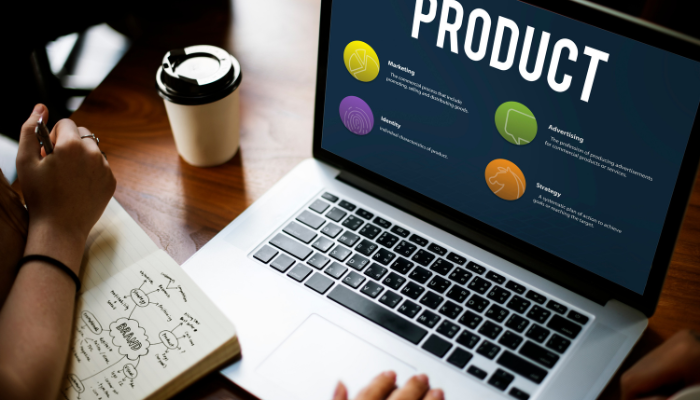Oscar Wilde once said, “An idea that is not dangerous is unworthy of being called an idea at all.” That’s pretty deep, right? It means that if you’re not taking risks and thinking outside the box, you’re not really innovating.
Product development is all about turning your wildest ideas into real, tangible things. To do this, you need a roadmap, a plan to guide you from your initial spark of inspiration to the final product. That’s where methods of product development come in. They’re like different tools in your toolbox, each with its own unique strengths and weaknesses.
By understanding these methods of product development, you can choose the right approach for your project, avoid costly mistakes, and bring your product to market faster.
So, let’s dive in and explore the world of product development!
Introduction to Product Development Methodologies
Product development is the process of taking an idea and turning it into a product that people can actually use. It covers everything from planning to designing, testing, and finally launching the product. To make sure everything runs smoothly, you need a clear method of product development that keeps things organized and focused.
So, what are product development methodologies? They are simply structured ways to develop a product, guiding your team on how to approach each step. Instead of winging it, using a method of product development helps you stay on track, avoid mistakes, and ultimately, create a successful product.
Why Are Product Development Methodologies Important?
- Keeps everyone aligned: With a clear plan, your team knows exactly what to do and when to do it. This keeps things organized and avoids any confusion.
- Improves teamwork: A good method helps everyone communicate better and work together smoothly. When everyone’s on the same page, projects just flow easier.
- Minimizes risks: Spotting issues early means you can fix them before they become big, costly problems. It’s all about catching mistakes before they spiral out of control.
- Speeds up delivery: A structured process lets you move faster without cutting corners. You’ll get your product out quicker while still keeping the quality high.
- Ensures customer focus: These methods make sure you’re always thinking about what the customer wants. In the end, it helps create something they truly need and love.
- Simplifies scaling: As your business grows, having a solid method in place makes it easier to scale up. You can handle more complexity without losing efficiency.
Alright, now let’s jump into the various methods of product development! Ready to see which one suits your project best? Let’s break it down.
1. Agile Methodology: A Flexible Approach to Product Development
Agile is a popular method of product development that emphasizes iterative and incremental development, collaboration, and flexibility. It’s like building a house one brick at a time, rather than all at once. This approach allows for adjustments based on feedback and changing requirements.
How Does Agile Work?
- Sprints: Agile projects are divided into short development cycles called sprints, typically lasting 2-4 weeks.
- Planning: At the beginning of each sprint, the team plans out the work to be done, setting clear goals and deliverables.
- Development: During the sprint, the team works together to develop the planned features or functionalities.
- Review: At the end of the sprint, the team reviews the completed work and gathers feedback from stakeholders.
- Retrospective: The team then reflects on the sprint, identifying what went well and what could be improved.
Why Choose Agile?
- Flexibility: Agile allows for changes to be made throughout the development process, ensuring that the final product meets the evolving needs of customers.
- Faster Time to Market: By delivering working software in small, frequent increments, Agile helps teams bring products to market more quickly.
- Improved Customer Satisfaction: Agile’s focus on delivering value to customers early and often leads to higher levels of satisfaction.
- Enhanced Collaboration: Agile promotes collaboration between team members and stakeholders, fostering a sense of ownership and shared responsibility.
- Reduced Risk: Agile’s iterative approach allows teams to identify and address potential risks early on, reducing the likelihood of project failure.
2. Scrum: A Framework for Agile Product Development
Scrum is a widely-used method of product development within the Agile framework. It focuses on teamwork, accountability, and iterative progress toward a well-defined goal. Scrum breaks down large projects into smaller, manageable “sprints” to ensure continuous improvement.
How Does Scrum Work?
- Sprints: Scrum projects are divided into short, time-boxed iterations called sprints, typically lasting 2-4 weeks.
- Roles: Key roles include the Scrum Master, who facilitates the process, the Product Owner who represents the stakeholders, and the development team.
- Ceremonies: Scrum follows specific ceremonies:
- Sprint Planning: The team defines goals and tasks for the upcoming sprint.
- Daily Scrum: A daily stand-up meeting to review progress and address any blockers.
- Sprint Review: A demonstration of the completed work and gathering of feedback.
- Sprint Retrospective: A reflection on the sprint to identify improvements.
Why Choose Scrum?
- Team collaboration: Scrum is designed to enhance communication and teamwork, making collaboration seamless.
- Structured roles and ceremonies: With roles like Scrum Master and Product Owner, everyone knows their responsibilities, keeping the process organized.
- Iterative development: Scrum’s sprint structure ensures that work is continuously reviewed, allowing for quick adjustments.
- Flexibility: Scrum embraces change, making it ideal when project requirements are constantly evolving.
- Predictability: By breaking down work into sprints, Scrum offers a more predictable timeline.
3. Kanban: A Visual Approach to Product Development
Kanban is a method of product development that emphasizes workflow management and the continuous delivery of value. This approach helps teams visualize their work, making it easier to manage tasks and optimize efficiency.
How Does Kanban Work?
- Board: A Kanban board is used to visualize the workflow, typically with columns representing different stages like “To Do,” “In Progress,” and “Done.”
- Cards: Each task or item is represented by a card, which is moved from one column to the next as it progresses through the workflow.
- WIP Limits: Kanban often uses work-in-progress (WIP) limits to restrict the number of items in each stage, preventing bottlenecks and ensuring a smooth flow.
Why Choose Kanban?
- Visualization: Kanban provides a clear and visual representation of the workflow, making it easy to identify bottlenecks and areas for improvement.
- Continuous Delivery: Kanban focuses on delivering value continuously, rather than waiting for large batches of work to be completed.
- Flexibility: Kanban is adaptable and can be customized to fit different teams and projects.
- Reduced Waste: By focusing on eliminating waste and improving efficiency, Kanban can help teams deliver products faster and with higher quality.
4. Waterfall: A Sequential Approach to Product Development
The Waterfall methodology is one of the methods of product development that follows a linear and sequential approach. In this method, each phase must be completed before the next one begins, creating a structured flow from conception to completion. It’s a straightforward way to manage projects, especially when requirements are well understood.
How Does Waterfall Work?
- Requirements Gathering: The initial phase involves gathering detailed requirements and specifications for the product.
- Design: Based on the requirements, the design phase creates blueprints for the product’s architecture, user interface, and functionality.
- Development: The development team then builds the product according to the design specifications.
- Testing: Once the product is built, it undergoes rigorous testing to ensure it meets the requirements and is free of defects.
- Deployment: If the testing is successful, the product is deployed or released to the market.
Why Choose Waterfall?
- Predictability: Waterfall offers a structured and predictable approach, making it easier to estimate timelines and costs.
- Thorough Documentation: It emphasizes detailed documentation throughout the process, which can be helpful for large projects.
- Clear Milestones: Waterfall has well-defined phases and milestones, making it easy to track progress.
5. Lean: A Value-Driven Approach to Product Development
Lean methodology is one of the methods of product development focused on creating more value with fewer resources by minimizing waste. It encourages teams to concentrate on what truly matters, ensuring that every step in the product development process contributes to customer value.
How Does Lean Work?
- Identify Value: Determine what truly adds value to your product from the customer’s perspective.
- Map the Value Stream: Visualize the entire process from start to finish to identify waste.
- Create Flow: Eliminate steps that don’t add value and create a smooth flow of work.
- Pull: Produce only what is needed, when it is needed.
- Perfection: Continuously improve the process and eliminate waste.
Why Choose Lean?
- Minimizing waste: Lean focuses on reducing waste in time, materials, and effort, which enhances efficiency.
- Efficient processes: By streamlining operations, Lean helps you deliver a better product faster, which can lead to increased customer satisfaction.
- Data-driven decisions: Lean supports using data to make informed choices, ensuring that every action is justified.
- Cross-functional collaboration: This method encourages teamwork across departments, fostering communication and innovation.
Choosing a Product Development Methodology
When you’re thinking about the methods of product development, picking the right one is super important. Let’s break down how you can make the best choice for your project:
Think About Project Complexity
Start by looking at how complex your project is. Is it straightforward, or does it involve a lot of different pieces and people? If it’s simple, a method like Waterfall might be just fine. But if your project is more complicated and might need changes along the way, Agile or Scrum could be better options. In fact, research shows that Agile projects have a 71% success rate because they can adapt easily to complex situations.
Check the Market Conditions
Take a look at the current market dynamics. If the market is changing quickly, you need a method that allows you to pivot easily. Lean or Agile methodologies can help you stay responsive and adapt to new customer needs and trends.
Look at Your Team’s Skills
Consider what skills your team members bring to the table. If your team has experience with Agile practices, that might be the best route for you. But if they are more comfortable with traditional approaches, like Waterfall, it’s wise to stick with what they know to ensure smooth progress.
Align with Your Business Goals
Make sure your chosen method aligns with your overall business goals. Do you want to enhance customer satisfaction or accelerate time to market? Choose a method that directly supports your specific objectives, ensuring you can achieve them effectively.
Involve Your Customers
Engaging your customers during the development process is essential. Methods like Agile encourage regular feedback, which helps you stay aligned with what your customers really want. This collaboration ensures that you’re not just meeting your goals but also delivering a product that resonates with your target audience.
So, now that you know the methods of product development, take a moment to think about these factors. Your choice can really make a difference in your project’s success. Remember, picking the right method isn’t just about the process—it’s about helping you and your team deliver the best product possible!
Conclusion
As we wrap up our exploration of the methods of product development, it’s clear that each methodology offers unique advantages tailored to different project needs. From Agile’s flexibility to the structured approach of Waterfall, choosing the right method is crucial for your project’s success.
A key takeaway is that the product development journey is an ongoing process. Even after selecting a methodology, remember to continuously evaluate its effectiveness. As Albert Einstein famously said, “The measure of intelligence is the ability to change.” Don’t be afraid to adapt your approach based on what works best for your team and project.
Ready to Take the Next Step?
Here at Codewave, we’re passionate about empowering businesses to build groundbreaking products. We offer a comprehensive suite of development services, from concept ideation to product launch, and we leverage a variety of methodologies to ensure the best fit for your project.
Our expertise includes branding and new product development, where we tailor our approach to ensure the best fit for your project. By leveraging a variety of methodologies, we help you create a strong brand identity and develop innovative products that resonate with your audience. With Codewave, you can transform your ideas into reality and stay ahead of the competition.
If you’re looking to unlock the full potential of your product ideas, reach out to our team of experts and let’s discuss how we can help you navigate the exciting world of product development.
Remember, the future is built by those who dare to innovate – so what are you waiting for?
Also read: How to Develop a Product: A Basic 7-Step Guide
Codewave is a UX first design thinking & digital transformation services company, designing & engineering innovative mobile apps, cloud, & edge solutions.







